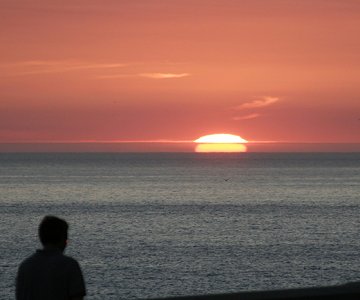 Planets. Comets. Auroras. Don't miss them! Sign up for Spaceweather PHONE.
Planets. Comets. Auroras. Don't miss them! Sign up for Spaceweather PHONE.
METEORITE STRIKE: Much remains unconfirmed, but there are widespread reports of a "significant meteorite strike" in the mountains of northern Norway. Stay tuned for more information about this event as it becomes available.
CORKSCREW ASTEROID: Tiny asteroid 2004 YN107 has been corkscrewing around Earth for seven years. Tomorrow, June 10th, a close encounter between the asteroid and the planet will send the asteroid on its way again. Get the full story from Science@NASA.
SEETHING SUNSPOT: Sunspot 892 is big and seething with energy. "The whole area is alive with motion. Quite astounding," says English amateur astronomer Pete Lawrence. Yesterday, he used his Personal Solar Telescope to make this movie:

Although the sunspot is seething, it has not yet exploded. But it could. The region's magnetic field harbors energy for M-class solar flares.
more images: from Gary Palmer of Los Angeles, California; from Emiel Veldhuis of Zwolle, the Netherlands; from Howard Eskildsen of Ocala, Florida; from Pete Lawrence of Selsey, UK.
DOUBLE SUNSET: Photographer Oscar Blanco was watching the sun set from the Atlantic coast of Spain on June 5th when, suddenly, the sun split in two:

Photo credit: Oscar Blanco of La Coruna, Spain
Atmospheric optics expert Les Cowley explains what happened: "This remarkable sunset mirage was made by a temperature inversion, a cool air layer below a warmer one. The air layers bend the sun's rays to form the mirage. The lower sun is upside down! It rises as the upper sun sets."
"The mirage is so strong," he adds, "that the bent rays are 'ducted'. They are trapped between air layers and travel some distance around the curvature of the earth before they escape." More images: #1, #2

